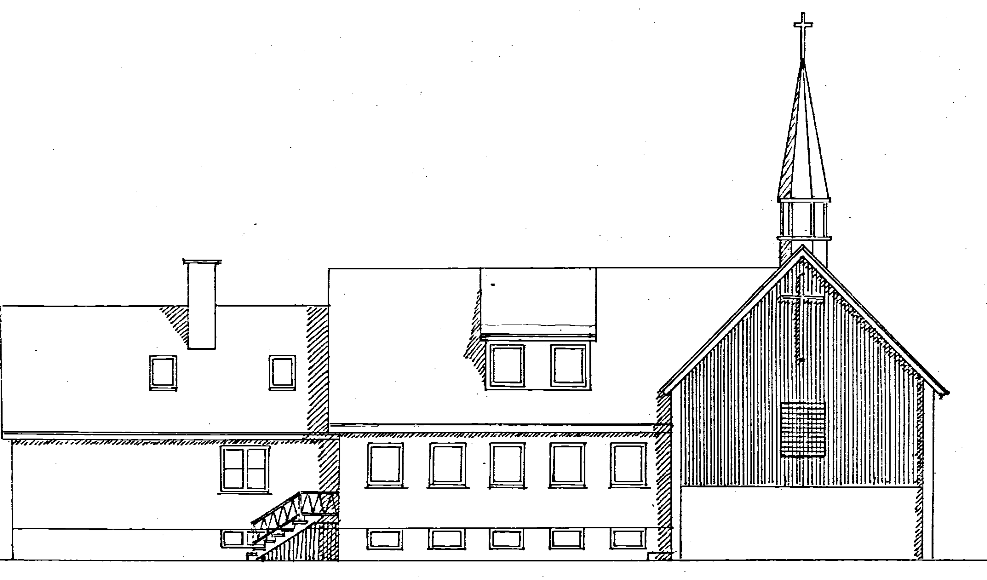You might have noticed the spire on Nuuk Art Museum? Beneath the spire was once a church, a clinic and the ministers home, later it became office and today the entire building is an art museum.
From 2005 the building on Kissarneqqortuunguaq became an art museum. When the founder Svend Junge died in 2007 the municipality took over the building, the fixture and the collection of art; donated as a whole to the municipality as Nuuk Art Museum by Svend and Helene Junge. Today the museum is owned and run by the municipality, Kommuneqarfik Sermersooq.
Nuuk Art Museum is originally three buildings; four if the exhibition room housing the museum’s temporary exhibitions is counted in. That was built and added the museum in 2007.
The museum’s office and the residency upstairs were once a ministers house. We have drawings of Reverend Nielsen’s house from 1955. This house was the first of the buildings that today assembled are Nuuk Art Museum. The crossing over the stream was made back then for the ministers house.
Drawings show the church and the clinic as they were built in 1958. The church was an Adventist Church and next to the church was a clinic called Skodsborgklinikken. The church was designed by Jens Johan Frederiksen, who himself was an adventist. He also took part in building the church and clinic and he designed and built several Adventist Churches in different countries in Africa.
The clinic was most likely inspired by Skodsborg Badesanatorium in Denmark, which were founded in late 19th century by doctor and health apostle Carl Ottosen. Skodsborg Badesanatorium treated people cronically ill and unwell on the basis of the Adventist’ health message. The idea in this message was that the body could be naturally healthy by avoiding artificial stimulus from modern civilized lifestyles and to keep to vegetarian food, clean water, excercise and clean air. On drawings of the inside of the clinic from 1958 are on the bottom floor a massage section, diathermia and different treatments by light and heat from electricity – today this floor is part of the museum’s permanent exhibition.
An apartment with bedrooms, kitchen and bath formed the upper floor today also exhibiting the permanent collection. A firewall separated the church from the clinic. The church had a brick baptismal basin as the Adventist baptism involves the whole body’s submersion under water. This basin was placed in front of the tall window in the exhibition room today showing the museum’s collection of Emanuel A. Petersen. The church could accommodate about 90 people at a service.
The clinic was a private religious clinic but stays were prescribed by the city’s doctors. The clinic was expanded in 1971 with what today are three rooms upstairs and two rooms downstairs. All are part of the permanent exhibition.
The company NunaOil bought the entire building in the end of the 1990s and turned clinic and church into offices and made the staircase today connecting the church with the clinic and the rest of the house. When Svend Junge bought the building and turned it into an art museum, he didn’t remove the cable trays; different traces of office are still visible in the museum.
As with the spire on the roof the building still shows its various uses from the 1950s and on.
Nuuk Art Museum will be happy to receive more information of the building and its usage from personal stories to photographs. Contact kunstmuseum@sermersooq.gl

